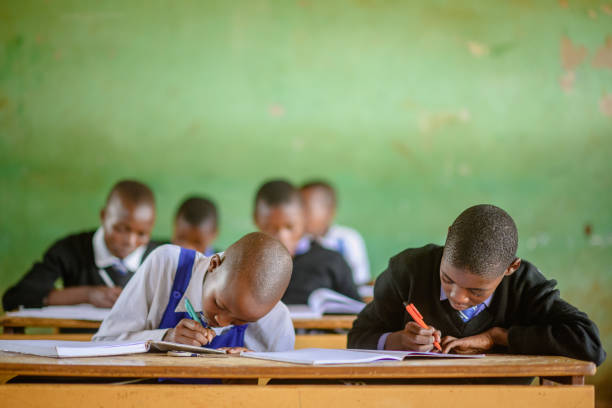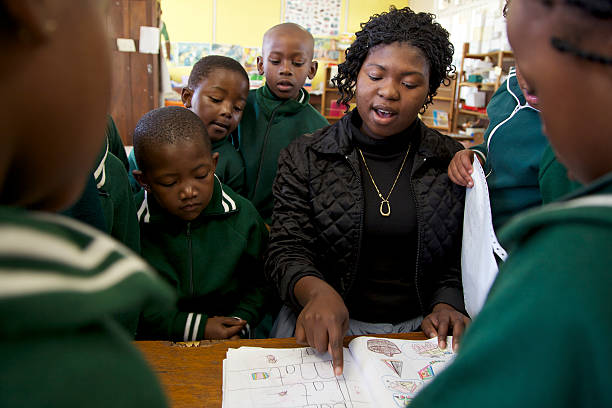Why One-Third of Kenyan Children Can’t Read – Literacy Survey.
Literacy – the ability to read, write, and understand spoken or written language – is central to educational success. However, millions of children globally still face major hurdles in gaining even the most basic literacy skills. In sub-Saharan Africa, the situation is particularly dire.
A 2023 UNICEF report revealed that 89% of 10-year-olds in the region were unable to read or understand a simple story. These issues are mainly driven by systemic inequality, poverty, conflict, displacement, and gender gaps.
In Kenya, foundational literacy levels remain deeply concerning. A national evaluation in 2023 assessed more than 44,000 children in 1,973 primary schools. The findings showed that three out of ten Grade 6 learners, aged 11, could not read Grade 3-level texts meant for 8-year-olds.
Experts warned that children unable to read at the right age are likely to lag behind not only in literacy but also in other academic subjects, since foundational skills like reading and basic math are essential for future learning and lifelong development.
The Developing Readers Study was created to tackle these literacy challenges. Conducted by the African Population and Health Research Center, the study focused on improving literacy among Grade 2 and 3 learners who were most behind.
An inclusive education researcher who took part in the initiative explained that the goal was to generate policy-relevant evidence on how support for struggling readers could be effectively integrated into school systems. “We wanted to test a model that could be practically adopted by schools without needing extraordinary resources,” the researcher said.
This intervention was piloted in 15 schools in Kiambu County, near Nairobi. The location was chosen strategically to fine-tune the programme before any national rollout. Preparation involved creating instructional materials, such as teacher guides, assessment tools, and learner homework packets. Teachers were trained to deliver the structured lessons tailored to each learner’s needs.
Out of 2,805 learners screened, 920 (or 33%) were identified as having reading difficulties. These children were grouped by ability: Module 1 included 410 non-readers, Module 2 had 212 beginning readers who could read 1–9 words per minute, and Module 3 covered 298 intermediate readers who could read 10–16 words per minute.
Over a 13-week period, these learners received 30-minute remedial lessons in English and Kiswahili. The sessions were monitored by curriculum support and quality assurance officers, who also conducted lesson observations and facilitated teacher feedback through cluster meetings.

Programme Outcomes
The results of the Developing Readers Study were substantial. After 13 weeks, the number of non-readers dropped from 43.3% to 18.9%, even after accounting for dropouts. Teachers, learners, and parents all played crucial roles in this success.
The structured programme gave teachers practical strategies to offer targeted support. By the end of the study, 92% of teachers followed the lesson guides closely, indicating a boost in their confidence and instructional competence.
Parents were also instrumental. Homework packets encouraged them to support reading practice at home. One teacher remarked, “The involvement of parents really made a difference. Children were motivated to practise more.”
Over a third (37%) of the learners advanced to fluent or near-fluent reading levels, meaning they no longer required remedial sessions. The youngest participants, especially those in Grade 2, showed the greatest gains, emphasizing the importance of early intervention.
Gender differences were also observed. Although both boys and girls improved, girls consistently outperformed boys in syllable and oral passage reading. These findings suggested that future literacy strategies should consider gender-specific learning needs. A curriculum support officer involved in the programme stated, “The tailored lessons helped us reach learners in a way the regular curriculum often doesn’t.”
The study presents a practical and evidence-backed approach for improving literacy in Kenya. Its comprehensive structure—combining trained teachers, customized materials, parental involvement, and ongoing support—offers a sustainable model for national implementation. Importantly, the intervention moved beyond classroom teaching by involving educational officials and aligning with local contexts.
To scale up the initiative, policymakers need to embed such remedial programmes within school systems, invest in teacher training, and encourage active home-school collaboration. A school head involved in the programme noted, “If this model is rolled out across the country, we won’t have to watch so many children fall through the cracks.”
With continuous support and evidence-driven reforms, Kenya can close its literacy gap and ensure all children gain the foundational skills necessary for academic and life success.




Discussion about this post